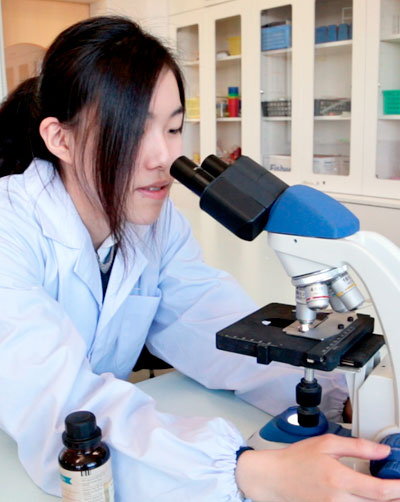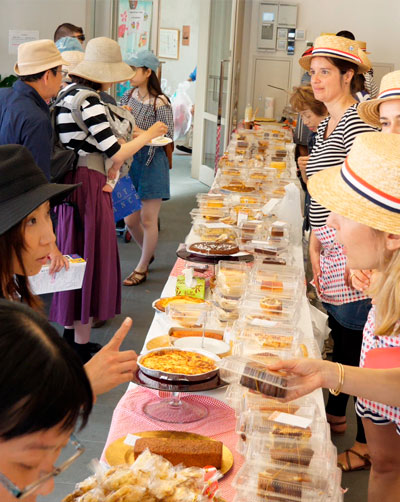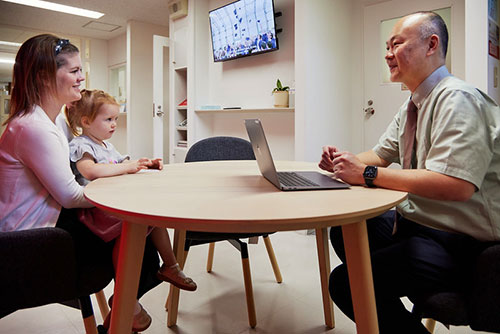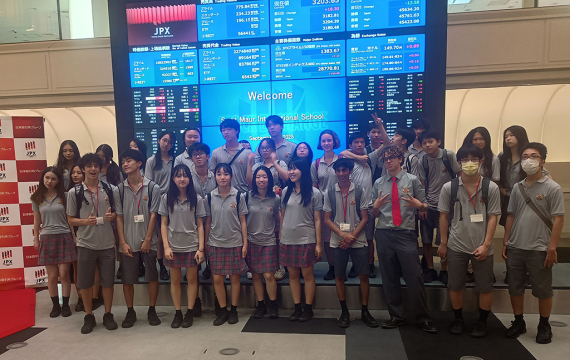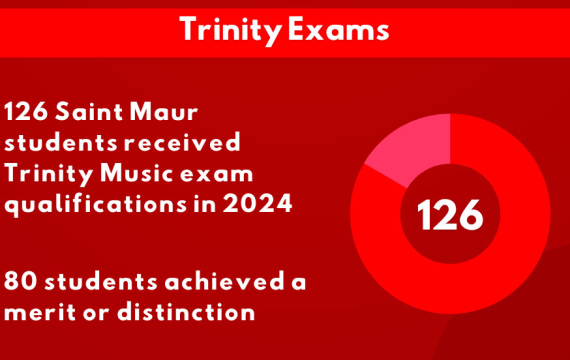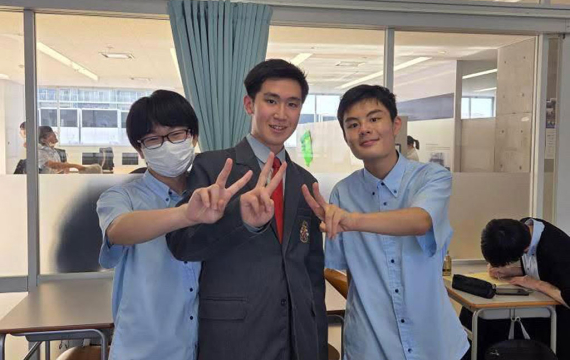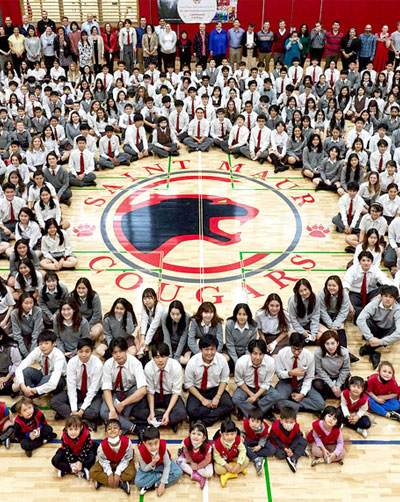
.jpg)
- Dr Mary Anne Suzuki
- Science
French Scientists Visit the Chemistry Lab (Bilingual Version)
On Wednesday 28th October, nine enthusiastic young scientists aged 6 to 10 made their way from the French Section to the Chemistry Lab in the Science Centre.
Their mission was to find out about crystals and to try their hand at making some for themselves. After thinking about where they see crystals in their daily lives, the students were given a tray of apparatus and chemicals to make their own. Their first job was to look at the reagents and hypothesise the colour of the crystals that they were to make. Presented with green copper (ii) carbonate powder and colourless sulphuric acid the suggestions ranged from green to brown to white. The students were provided with instructions in both English and French. Working in (as far as possible, socially distanced) groups of three, the students added the powder to the acid. They were very excited to see effervescence occuring (effervescence is the technical name for fizzing!). After filtering their mixture they obtained a beautiful blue liquid.
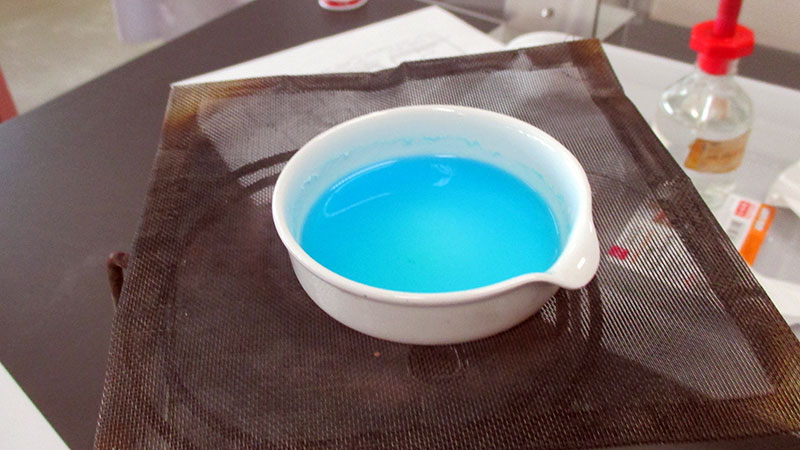
This was copper (ii) sulphate solution. The students heated the solution in an evaporating basin and then poured the remaining liquid into a crystallising dish.
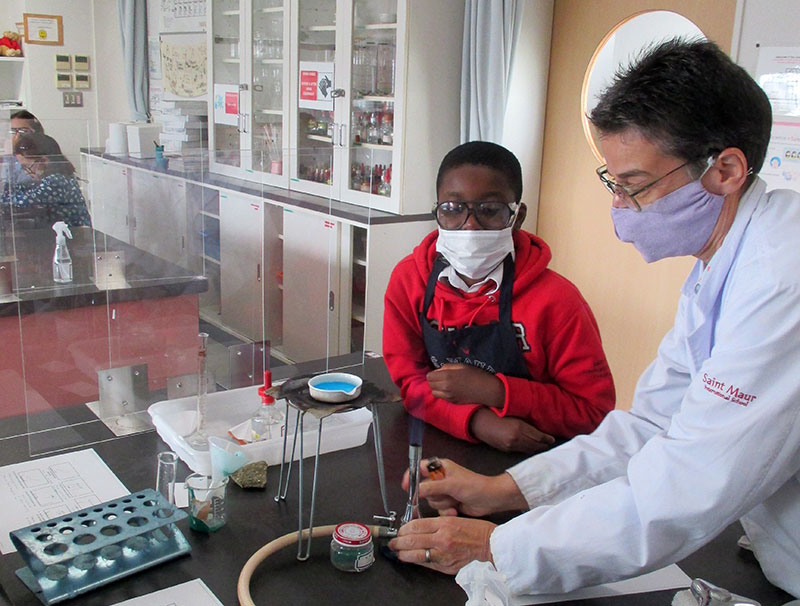
They were very excited to see the crystals just starting to grow as it was time to pack up. The students took their crystallising dishes back to the classroom where the blue crystals were already growing bigger.
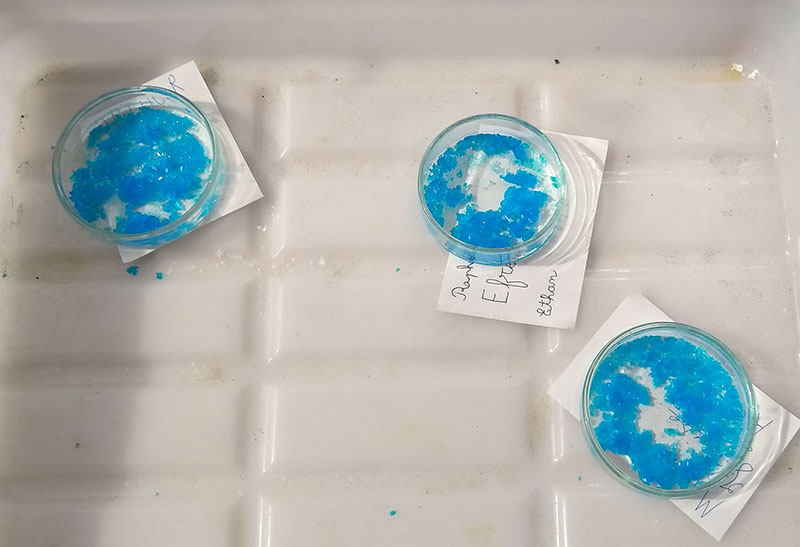
This was not just an excellent opportunity for some of our youngest students to get experience in the laboratory. It was also an opportunity for the older students to step up and help the younger students in their group, as evidenced by them translating the English and occasionally (very bad) French of the Chemistry teacher into much better French. Global Citizens in the making!
Gros plan sur des scientifiques Français
Mercredi 28 octobre, neuf jeunes scientifiques enthousiastes âgés de 6 à 10 ans firent le trajet de la classe de la section française au laboratoire de Sciences et Chimie. Leur mission était de découvrir ce qu'étaient des cristaux et d'essayer d'en créer eux-mêmes. Après avoir pensé où ils pouvaient trouver des cristaux dans la nature, les élèves reçurent un plateau d'outils scientifiques et de produits chimiques pour fabriquer leurs propres cristaux.
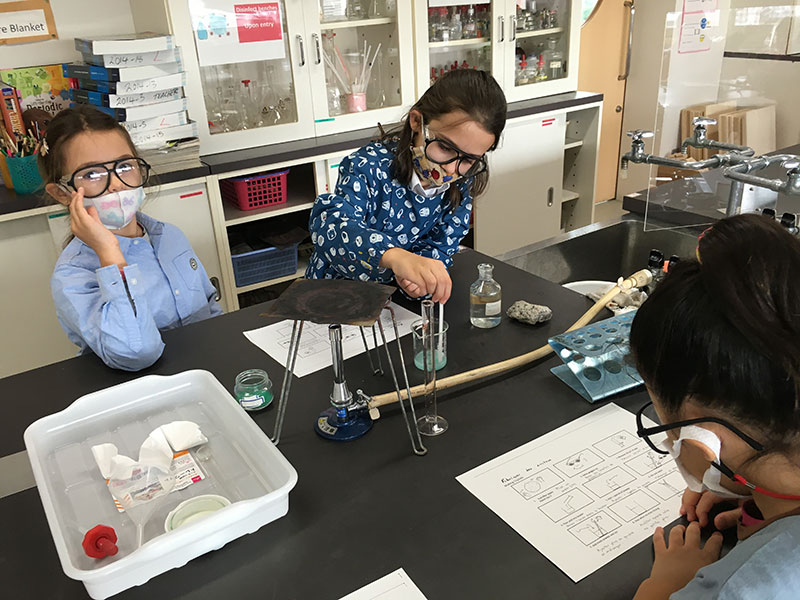
Leur premier travail fut de regarder les réactifs et d'émettre des hypothèses sur la couleur des cristaux qu'ils allaient fabriquer. À partir de cuivre vert , de poudre carbonée et d'acide sulfurique, ils ont suggéré des couleurs allant du vert, au marron en passant par le blanc. Ils étaient très excités d’observer l’effervescence se produire. Après filtration, ils obtinrent un magnifique liquide bleu. Il s’agissait d’une solution de sulfate de cuivre. Les élèves firent chauffer la solution dans un bassin d’évaporation puis filtrèrent le liquide restant dans une coupelle de cristallisation. Ils étaient très excités de voir les cristaux commencer à se former au moment où la session se terminait.
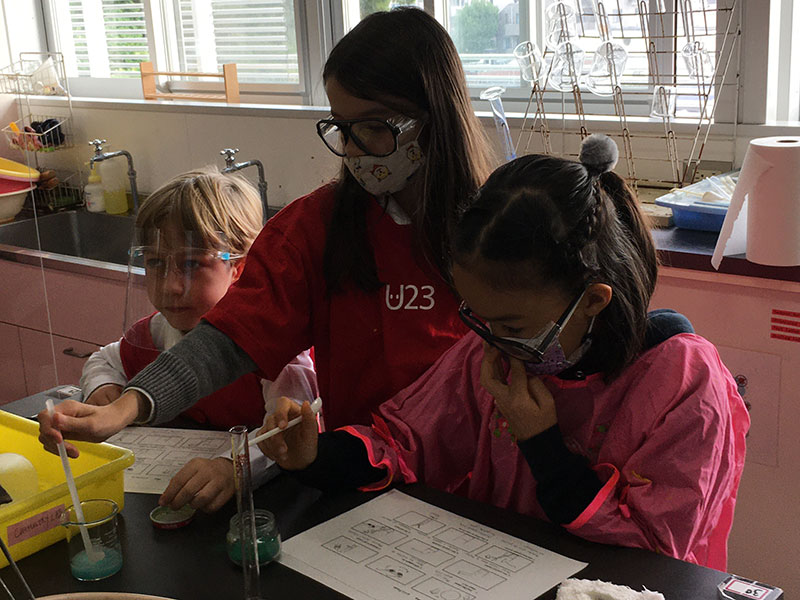
Les élèves emportèrent le plateau dans leur classe. Il ne s’est pas uniquement agi d’une formidable opportunité pour certains de nos plus jeunes élèves d’expérimenter en laboratoire, mais aussi celle pour les plus âgés du groupe d’aider leur camarades, notamment en ce qui concerne la manipulation et la traduction de l’anglais et, occasionnellement, piètre français de l’enseignante en chimie. Quels Global Citizens !


